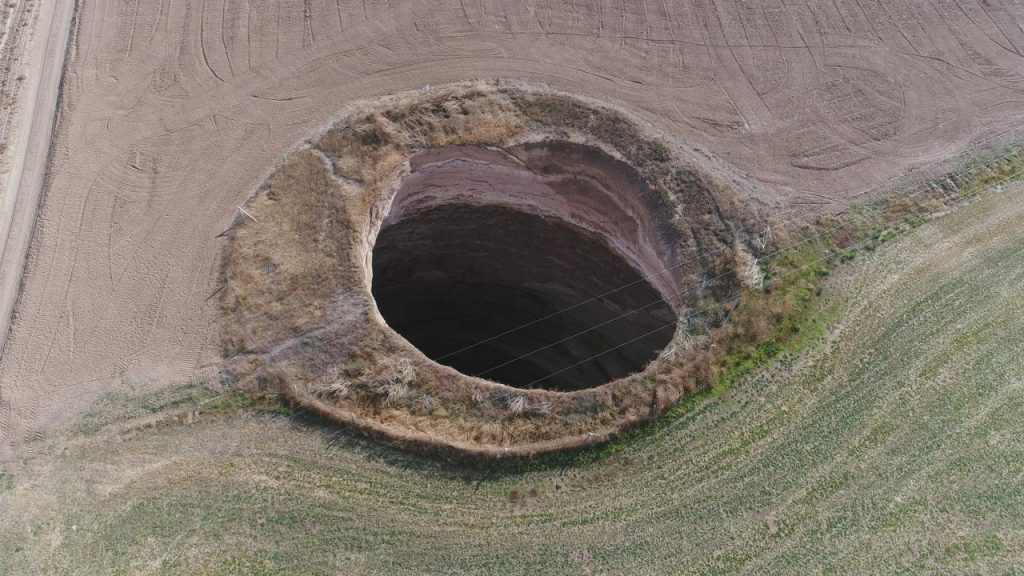The scarcity of rainfall and drought continue to affect Turkey. In the Konya Plain, known as the agricultural capital, the formation of sinkholes is increasing every day, with approximately 3 thousand sinkholes recorded in recent research. Prof. Dr. Fetullah Arık, Director of the Konya Technical University Sinkhole Application and Research Center, stated that sinkhole activity and numbers are increasing in the region. Most sinkholes in the area are identified as cover collapses, occurring on updated layers on top of the bedrock. They commonly appear in agricultural areas and near residential areas. According to Prof. Dr. Arık, in addition to the 605 sinkholes registered in the Disaster Risk System by AFAD, around 10 to 15 more sinkholes have been added this year. However, there are shallow sinkhole structures in the region as well. When considering these types of sinkholes, the number can reach the thousands. Prof. Dr. Arık predicts that the rate of sinkhole formations will continue to increase due to ongoing drought and increasing groundwater usage in the region.
The underground water level is also decreasing. Prof. Dr. Fetullah Arık emphasized that the region’s only water source is rainfall, and in recent years, especially after 2019, the annual average rainfall has been below normal, leading to a lack of groundwater recharge due to the absence of significant winter precipitation like snow. As a result of this drought, coupled with increasing water demands from both agriculture and livestock, the groundwater level is declining. It is a fact that the groundwater level is decreasing, which in turn leads to the expansion of underground voids and contributes to the formation of sinkholes. To sustain agriculture in the region, it is essential to use water more efficiently. While outdated wild irrigation practices have been abandoned in favor of pressurized irrigation systems, there is still an excessive water consumption issue. Prof. Dr. Arık suggested promoting the cultivation of crops that require less water to mitigate sinkhole formations in the medium to long term.
Prof. Dr. Fetullah Arık pointed out that signs of sinkhole formation can be observed before sinkholes develop closer to residential areas in Konya. By creating a map of sinkhole-sensitive areas through a 3-4 year study, it was found that all sinkholes occurred within these sensitive zones, calling for the preparation of a risk map to assess the potential impact on human settlements and structures. Prof. Dr. Arık advised vigilance by residents, as sinkhole formation could be indicated by specific indicators such as accumulating water in previously dry areas, cracks in the ground, asphalt, or buildings, difficulty in opening doors or drawers, and residents hearing underground noises before sinkhole occurrence. Sinkholes that are already sinking may cause underground water to become turbid, leading to murky water flowing from wells, serving as a warning sign of imminent sinkhole formation. Therefore, residents should be cautious and heed these warning signs.
Regarding sinkhole mitigation, Prof. Dr. Arık explained that filling sinkholes is not a task for individual citizens due to the unique engineering characteristics of sinkholes. Instead, it requires an expert assessment and precise methodical solution for effective mitigation. There are various methods available, such as using materials collected from the surroundings to fill sinkholes. Still, these techniques might lead to subsequent collapses if not done correctly. Therefore, residents should seek the advice of engineering professionals. Additionally, methods like grouting by injecting concrete into sinkholes or using expansive concrete to prevent further collapses can be applied in a combination to address sinkhole issues effectively. It is crucial to determine the engineering structure of sinkholes, including their location, depth, and surrounding geological factors, before taking any remediation action. Ultimately, residents are advised to seek professional guidance rather than attempting to fill sinkholes independently.


